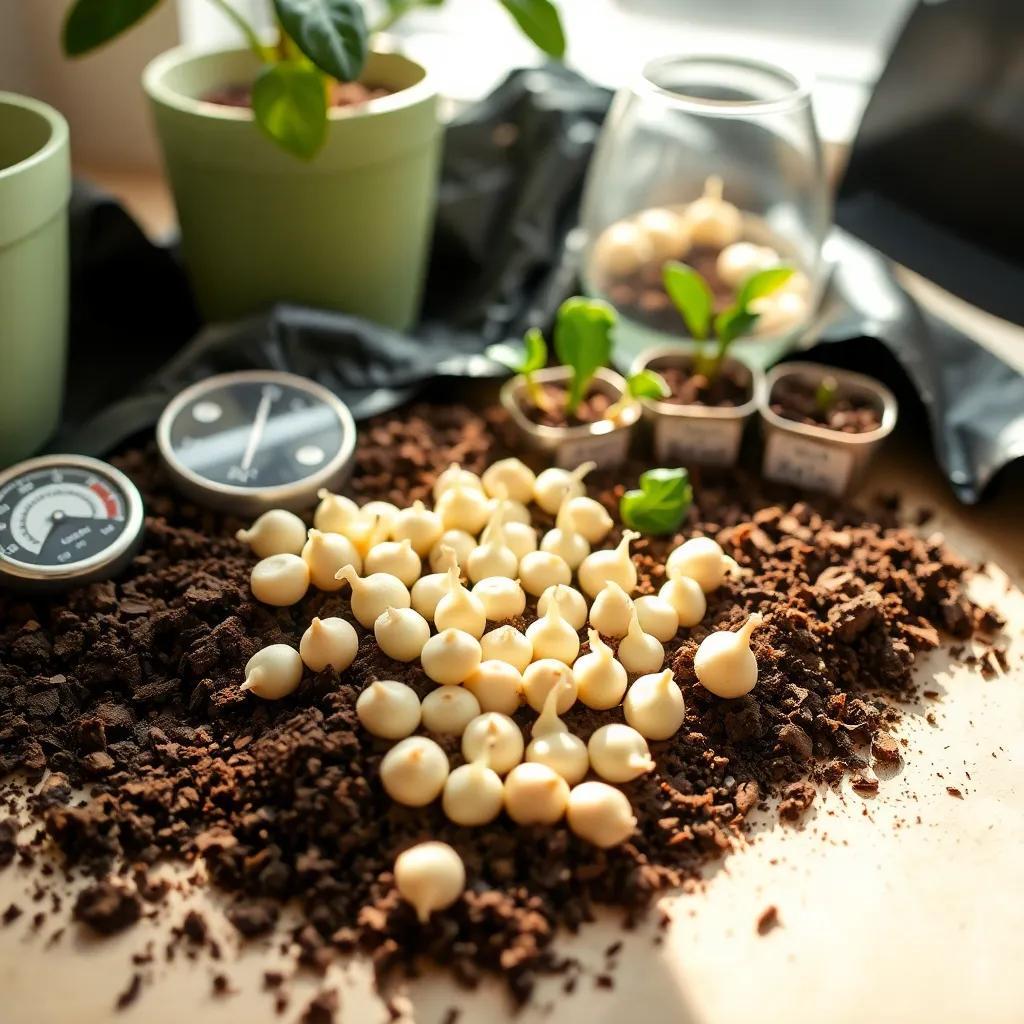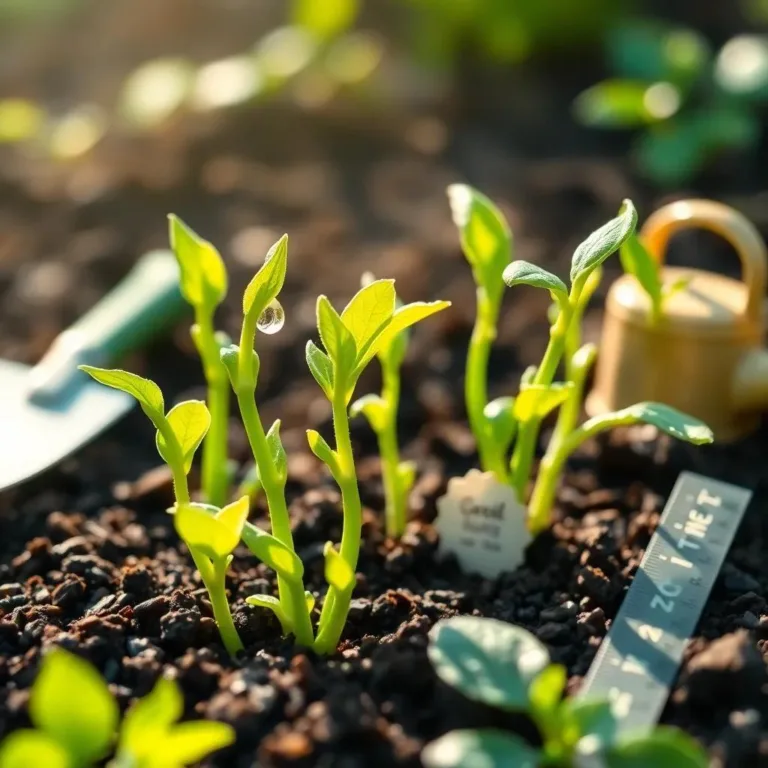Have you ever wondered how long it truly takes for beans to turn into those delicious plants we love? Whether you’re a gardening novice or a seasoned pro, understanding the germination process can make a world of difference! Join me as we explore the fascinating journey of bean seeds, from their cozy beginnings in the soil to sprouting into vibrant plants ready for harvest!
Factors Influencing Bean Germination Time
When I think about growing beans, the first thing that pops into my mind is how many factors can influence their germination time! These little seeds are quite picky about their surroundings. Here are some important aspects to keep in mind:
- Temperature: Beans really love warmth. The sweet spot for their germination is between 70°F and 85°F (21°C – 29°C). If the temperature dips below 50°F (10°C), it’s like throwing a winter party that no one wants to attend! So, keep them cozy!
- Moisture: Water is a really big deal for beans. They like their soil to be consistently moist, just like a sponge that has been lightly wrung out. Too much water can cause the seeds to rot, while too little can leave them parched and stubborn. Think of it like making the perfect cup of tea—too hot, or too cold, and it’s just not right!
- Seed Quality: Freshness matters! It’s important to plant seeds that are high-quality and have been stored well. Using old or damaged seeds is like trying to bake a cake with expired ingredients—yikes!
- Soil and Planting Depth: Beans prefer soil that is well-draining and slightly acidic to neutral. The right planting depth is about 1 to 1.5 inches (2.5 to 3.8 cm). If you plant them too deep, they might get lost!
So, if you’re planning to grow beans, consider these factors. The more you cater to their needs, the faster they’ll sprout and grow into the delicious plants you crave!
Optimal Conditions for Faster Germination
Creating the perfect environment for your beans can make a world of difference! I’ve gathered some tips to set them up for success. Let’s look at what you can do to help those little beans germinate like champs!
- Temperature Control: Like I mentioned, beans love warmth! Using a seedling heat mat can be a great way to keep the temperature just right. It’s like getting a warm hug when you’re feeling chilly!
- Moisture Management: Use a light mist or gentle watering method to keep the soil moist. It’s like giving your beans a nice drink without drowning them. Remember, they need that consistent moisture!
- Light Conditions: Beans don’t need light to germinate, but once they sprout, they’ll be looking for the sun! Make sure they have a good light source to help them grow strong and healthy.
- Good Airflow: Proper airflow helps prevent fungal diseases that can ruin your bean dreams. Ensure that the soil isn’t too compacted and there’s space between your seeds for air to circulate.
- Spacing: Don’t overcrowd your beans! Give them enough space to grow. It’s like having a dance party—everyone needs room to move around!
By focusing on these optimal conditions, you’ll create a happy home for your beans that encourages quick and healthy sprouting! Who doesn’t want to celebrate those little green miracles popping up from the soil? Happy planting!

Typical Germination Timelines for Bean Varieties
Alright, let’s get down to the nitty-gritty! Different types of beans have different timelines for sprouting, and knowing these can help us plan our gardening adventures better! Here’s a quick guide to the germination times for some common bean varieties:
- Bush Beans: If you’re in a hurry for some quick results, bush beans are your best friends! They usually germinate within 7 to 10 days. They’re like the speedy delivery service of the bean world!
- Pole Beans: These vining beauties take a little longer, generally sprouting in about 10 to 14 days. They’re worth the wait, though, as they climb high and produce a lovely harvest!
- Lima Beans: Lima beans take their time, needing around 10 to 14 days to germinate. They love warm soil, so make sure the temperature is just right for them to kick off their party!
- Runner Beans: Much like pole beans, runner beans usually sprout in 10 to 14 days. Don’t be surprised if they take a bit longer to mature, as they enjoy a leisurely growth pace.
- Soybeans: Soybeans can be tricky, taking anywhere from 7 to 14 days to germinate, depending on various factors. Patience is key with these little champs!
Remember, these timelines can vary based on the quality of seeds, soil conditions, and temperature. So, keep an eye on those beans, and soon enough, you’ll see them sprouting up like green superheroes!
Tips to Accelerate Bean Seed Germination
Let’s face it—waiting for beans to sprout can feel like watching grass grow! But don’t worry! There are some fantastic tricks to help speed things up. Here are my top tips to help your beans germinate faster:
- Pre-soaking Seeds: Before planting, give those seeds a little spa treatment! Soak them in water for about 8 to 12 hours. This helps soften their tough outer shells and gets them ready to grow!
- Warm Soil: Keep an eye on the temperature! You want your soil cozy—between 70°F and 85°F (21°C – 29°C). Using a seedling heat mat can really help keep things toasty, especially in cooler weather!
- Consistent Moisture: Water your beans regularly, keeping the soil moist but not soggy. A gentle misting method is great! Think of it like giving your beans a refreshing drink without drowning them.
- Light Exposure: While beans don’t need light to germinate, once they sprout, they’ll be looking for some sunshine! Make sure they get plenty of light to grow tall and strong.
- Nutrient-Rich Soil: Before planting, mix in some organic matter like compost. This boosts soil fertility and gives your seeds the nutrients they need to get going!
By following these tips, you’ll be helping your beans get off to a great start! Trust me, it’s worth the extra care to see those little green shoots popping up in no time!
Common Germination Issues and Solutions
Ah, the joys of gardening! Sometimes things don’t go as planned, and beans can be a bit fussy. But don’t fret! Here are some common germination problems you might encounter, along with friendly solutions to tackle them:
- Poor Germination Rates: If your seeds aren’t sprouting, check their quality first. Old or damaged seeds can be trouble! Also, make sure you’ve got the right temperature and moisture levels. Remember, beans are picky!
- Fungal Diseases: If your seeds or seedlings look sickly, they might be suffering from a fungal disease like damping-off. To prevent this, avoid overwatering, and ensure good air circulation. A little clean up goes a long way!
- Pest Problems: Watch out for sneaky critters like cutworms! Using physical barriers, like row covers, can help protect your precious beans from becoming a snack. It’s like a security blanket for your plants!
- Cold Temperatures: Beans can be quite sensitive to the chill! If the soil is too cold, hold off on planting until it warms up. You can also use row covers to keep them warm during unexpected cold snaps.
- Incorrect Planting Depth: Make sure you’re planting your beans at the right depth—about 1 to 1.5 inches (2.5 to 3.8 cm). If planted too deep or too shallow, germination struggles to happen.
By being aware of these common issues and their solutions, you can keep your bean garden thriving. Remember, gardening is all about learning and adapting, so keep your spirits high and enjoy the journey! Happy planting!

